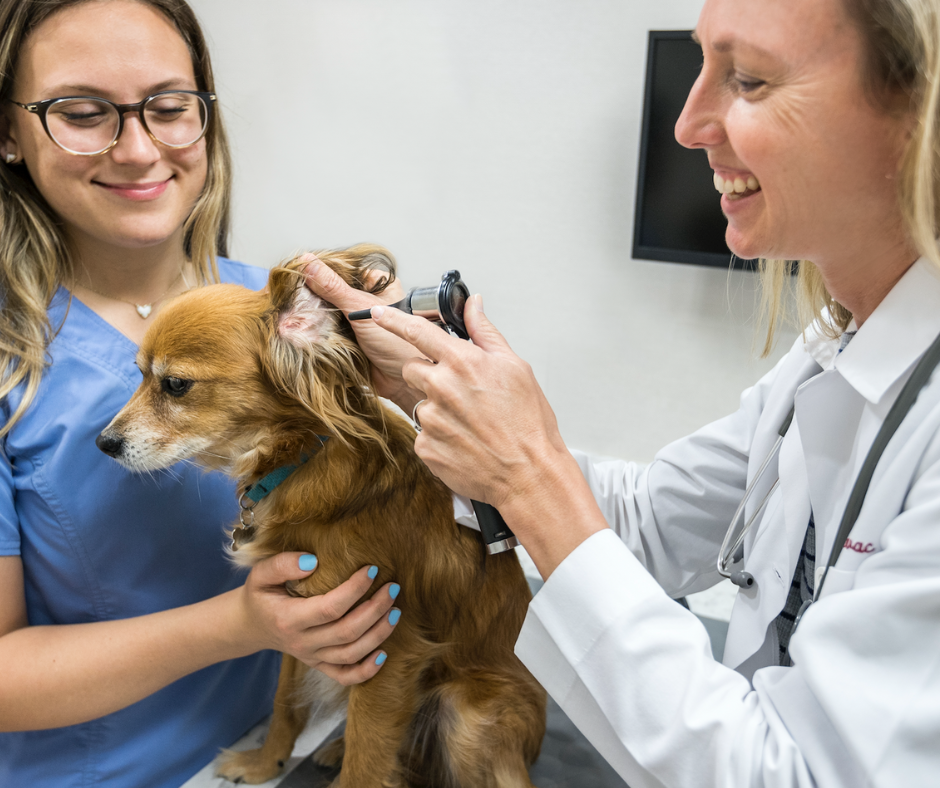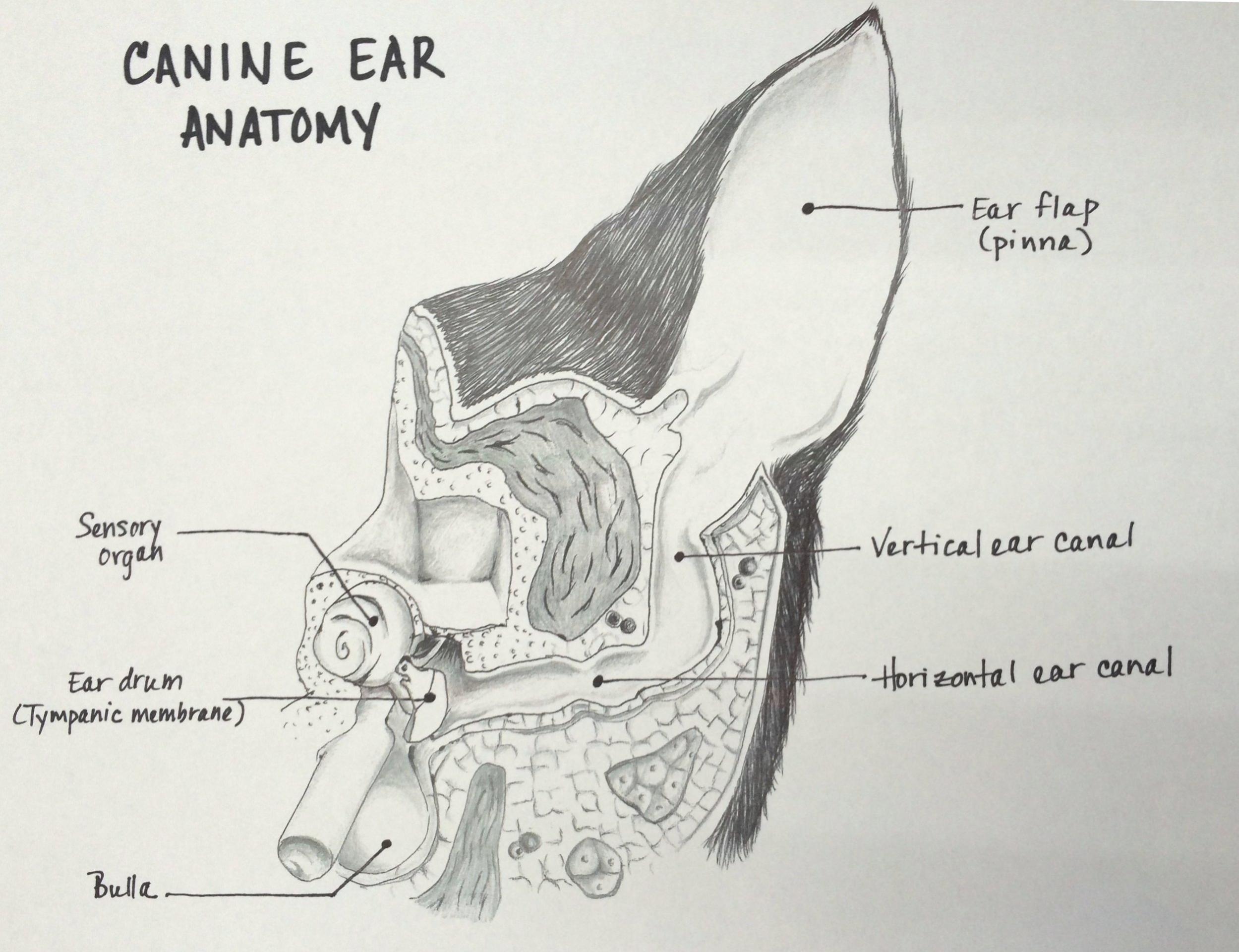The Patient:
Sammy, a 2 year old male neutered Golden Retriever, came to see me for a smelly and painful ear. His owner said he had been scratching at the right ear for a few days and they had noticed a bad odor coming from his head. When they tried to look at it, he pulled away and yelped.
The Case:
On examination, the right ear was very red and had a thick, moist, brown discharge coming from the canal. The left ear was normal and he let me evaluate the deeper structures of the canal including the eardrum (also known as tympanic membrane). But, it was too painful in the right ear for Sammy to do a complete exam with the otoscope. I obtained a small sample of the discharge with a Q-tip and looked at it under the microscope to determine what was growing in there. This is called ear cytology. Sammy was diagnosed with moderate yeast otitis externa in the right ear. The term otitis externa refers to an infection in the external ear canal, outside of the eardrum. This is the most common ear infection in dogs and cats. Humans are more likely to get an otitis media or interna, involving the deeper structures of the canal behind the eardrum. I only saw yeast organisms on the ear cytology, but I often also see bacteria or even mites (parasites).
The Treatment Plan:
I prescribed an ear ointment for Sammy and instructed the owners to apply the medication in the right ear once daily for 10 days. There are a few different ways to treat an ear infection, including daily ointment, or a longer acting plug of medication that is instilled in the hospital and slowly absorbed over several weeks. I often leave it up to the owners to choose which one they prefer, and it sometimes depends on the temperament or cooperativeness of the patient. Since I was unable to evaluate the deeper ear canal, I recommended a recheck in 2 weeks.

The Outcome:
At the recheck appointment, Sammy's ear was looking much better and he was no longer painful or having any discharge. I was able to look into the canal with my otoscope and see his eardrum. Everything looked great. The underlying cause of an ear infection is sometimes hard to determine. Ear infections in dogs are not contagious (unless a mite is found) and are more commonly associated with an underlying allergic condition, such as a food allergy or environmental allergy. A foreign body can also lead to an infection so it is vital to ensure there is no plant material in the ear such as a foxtail. I also sent Sammy's owner home with an ear cleaner and instructed them to use it twice a month to keep his ears clean, and also to notice an infection at its earliest stages, before there is pain or marked discharge.
If an allergy is to blame, the patient is sure to have another ear infection down the road. We often need to use long term systemic allergy medications in conjunction with topical ear medications and cleansers for dogs with chronic otitis. It is important to treat ear infections properly as long term infections lead to thickening and scarring of the canal, often completely occluding any airflow leading to deafness. Some dogs with severe disease also need radical surgery to remove the whole diseased canal.
If you suspect an ear problem in your pet, be sure to contact us right away.
 Veterinary Medical Center of Central New York
Veterinary Medical Center of Central New York
The Drake Center for Veterinary Care is an AAHA-accredited animal hospital located in Encinitas, CA. The Drake Center loves being a source of information for all pet owners across the country however if you have any questions regarding pet care and do not live in Encinitas, CA or surrounding cities, we encourage you to contact your local veterinarian.
